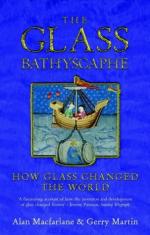|
This section contains 477 words (approx. 2 pages at 300 words per page) |

|
Since the early 1700s when Edmund Halley invented the first diving bell, oceanographers and engineers had been putting forth a series of efforts to overcome the obstacles associated with deep sea exploration.
The diving bell and diving helmet extended a person's time in the water by increasing the duration of the air supply. The bathysphere, invented by Americans William Beebe and Otis Barton in 1930, extended greatly a diver's depth range by protecting the diver from deep water pressure. However, to more fully explore the oceans, researchers still needed lateral mobility and independence from surface support vessels.
During the late 1940s and early 1950s, the Swiss physicist, Professor Auguste Piccard, worked on various prototypes of a vessel intended to give deep sea explorers the mobility they were after; he called it the bathyscaphe from the Greek words for "deep" and "boat. "
His success came with two vessels, the French...
|
This section contains 477 words (approx. 2 pages at 300 words per page) |

|


